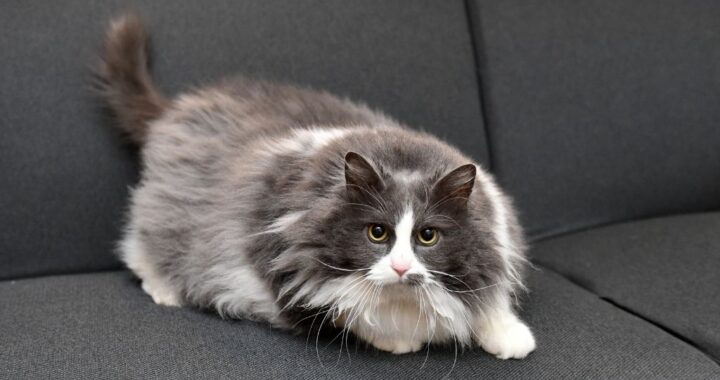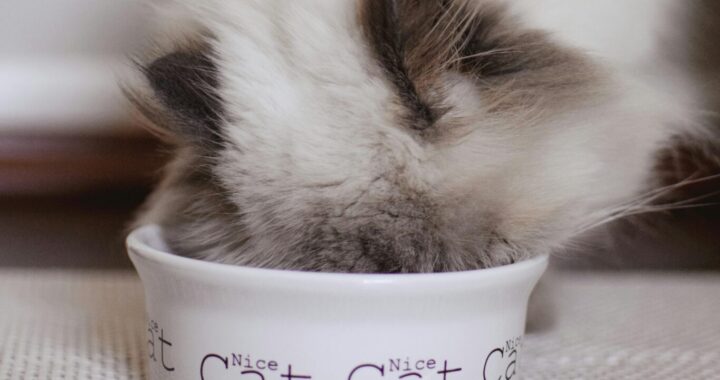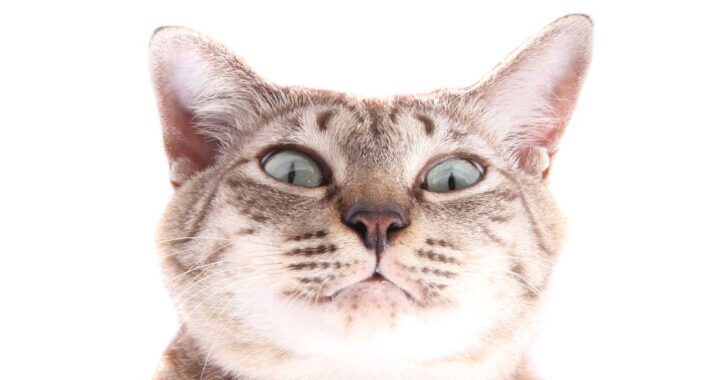Sixty percent of U.S. cats are overweight or obese according to the Association for Pet Obesity Prevention. In fact, obesity in cats is so common and accepted–particularly on social media–that many cat parents do not even realize that their cat is over ideal weight. But no matter how cute our “chonky” cats might be, the risks are undeniable.
Diabetes and Other Risks
Weighing just two pounds above ideal weight can put your cat at risk for serious medical conditions. In fact, a cat with obesity is at least three times more likely to develop Type 2 diabetes than a cat of healthy weight. Other common weight-related disorders in felines include:
- Kidney disease
- Chronic inflammation
- Heart disease
- Osteoarthritis
- High blood pressure
- Cancer (esp. in the abdomen)
Overweight and obese cats also tend to interact less with their families and are expected to live shorter lives.
How to Check Your Cat’s Weight
The best way to check if your cat is a healthy weight is to consult your veterinarian. The second best way to tell if your cat is a healthy weight is to give them a home exam:
- Feel your cat’s side: If you can easily feel their ribs under a little fat, your cat is a healthy weight.
- Look at your cat from the side: Fat hanging under their belly could be a sign that your cat is over ideal weight. (It’s normal for cats to have a “primordial pouch” of loose belly skin, though!)
- Look at your cat from the top: It should have an hourglass figure versus a round belly. A Body Condition Score Chart can help! (Visually assessing a senior cat’s weight can be extra tricky, since muscle loss can create an hourglass-like shape even in elderly cats who are overweight.)
It’s important to note that some breeds have vastly different ideal weights. A Siamese can weigh just 5 pounds and be healthy, while a Maine Coon can be healthy at 25 pounds – that’s quite a range!
Dieting Safely
If you think your cat needs a diet, your next step should be to talk to your veterinarian. Putting a cat on a diet is not as simple as calorie restriction alone; cat physiology is different from humans. If they do not eat enough, they can develop a life-threatening form of liver disease known as hepatic lipidosis or “fatty liver syndrome.” Again, we emphasize the importance of consulting your veterinarian to develop a weight-loss plan!
Maintaining an Ideal Weight
The two keys to maintaining your cat’s weight are the same as with maintaining human weight: you want to keep them active and watch their intake.
Tips for keeping cats active:
- Plan on playing with your cat daily. They prefer playing with partners!
- Rotate toys every couple of days.
- Add high shelves, scratch posts, and enclosed outdoor areas (“catios”).
- Hide their food throughout the house and make them hunt for it.
- Consider your cat’s preferred “prey” type. Some cats prefer feathers, for instance, others love balls or mice.
Tips for watching a cat’s intake:
- Maintain a consistent feeding schedule and limit treat intake.
- Use the same measuring cup each time you feed your cat(s).
- Take note of the caloric content of the food you’re giving your cats.
- Feed kittens and senior cats food designed for their stage of life
- Make sure they have plenty of clean water available at all times.
Ideally, you want to control your cat’s weight before it becomes a problem. However, if it does, know that there are numerous solutions. And remember: The best path to weight-loss for any cat is to follow a plan your veterinarian develops for you.




